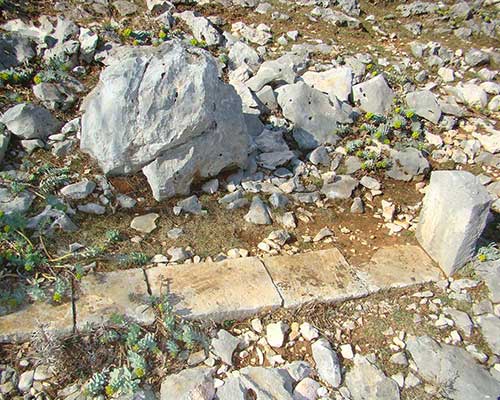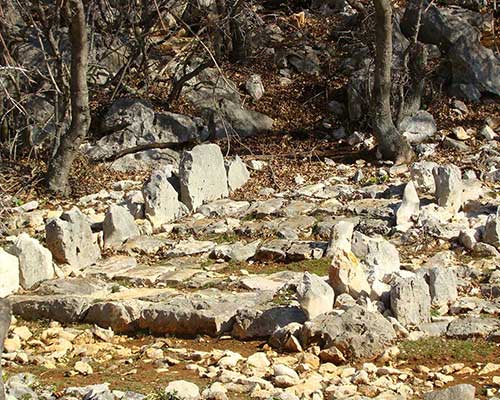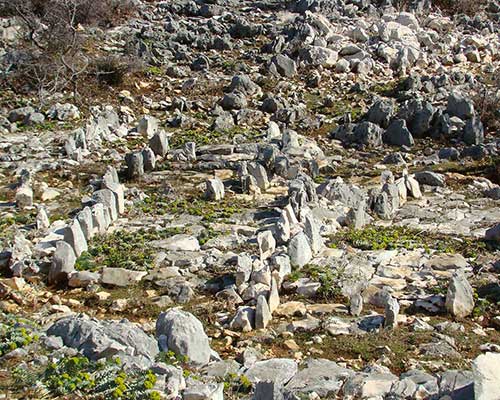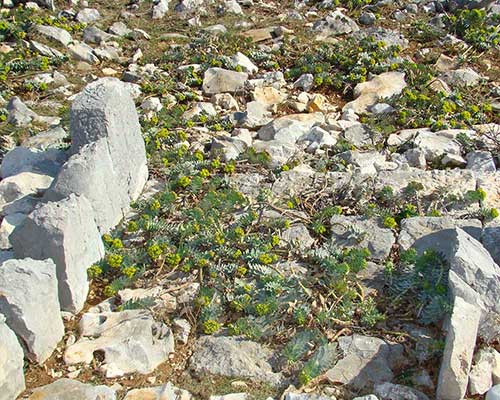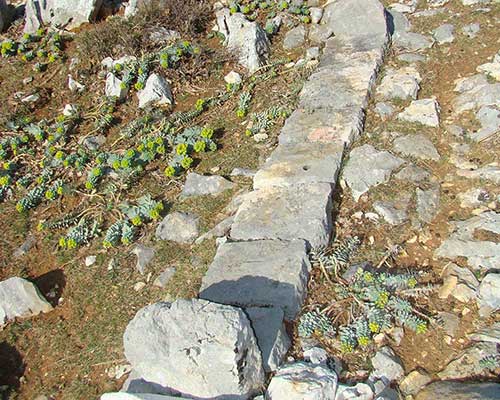Mirila, stone monuments to the departed
There are several preserved groups of mirila in the area of Velebit. These monuments to the dead were built as part of funeral customs of the locals in the past. Due to the distances between parish churches and respective cemeteries in the area, the deceased sometimes had to be carried on a long voyage. All groups of mirila are located along the paths leading towards the sea, and they would typically be built halfway from the settlement to the cemetery.
Despite major distances that needed to be crossed, which entailed the hard work of carrying the deceased, it was not permitted to put the body to the ground in order to get some rest. Instead, the villagers would take shifts in the duty of carrying the dead, in order to cover the required distance in accordance with the custom.
In this procession from the household of the deceased to the graveyard, it was permitted to stop for rest, and lay the deceased on the ground only once – on a place that would become mirilo. It was there that the deceased would be “measured”: two stone plates would be used to record the position of the head and the feet. Mirilo would be built only after the burial.
For the people of Velebit, the monuments of mirila were an important aspect of their culture. They represented an expression of a cult of the dead, and they were in fact more important than the gravesite where the deceased is actually buried. Following the burial, the deceased would no longer be visited, nor would anyone come to the graveyard until someone else’s passing. This custom partly originates from the frequently considerable distances between mountain settlements and local cemeteries; on top of that, however, it was believed that a grave contains only the body, and not the soul, for the soul “stays on mirilo”.
Being such important symbols of the memory of the deceased, people frequently visited mirila and took care of their maintenance.
This custom lasted until the 1950s, and then it disappeared.
In December 2007, the Croatian Ministry of Culture reached a Decision granting the funeral customs connected with mirila the status of intangible cultural goods.
Near the settlement of Starigrad-Paklenica, there are two educational trails leading through eight conserved sites containing mirila. The first trail is one kilometer away from the center of Starigrad-Paklenica, and the second trail is located at the village of Ljubotić (drivers should leave the state road at the settlement of Tribanj Kruščica).






